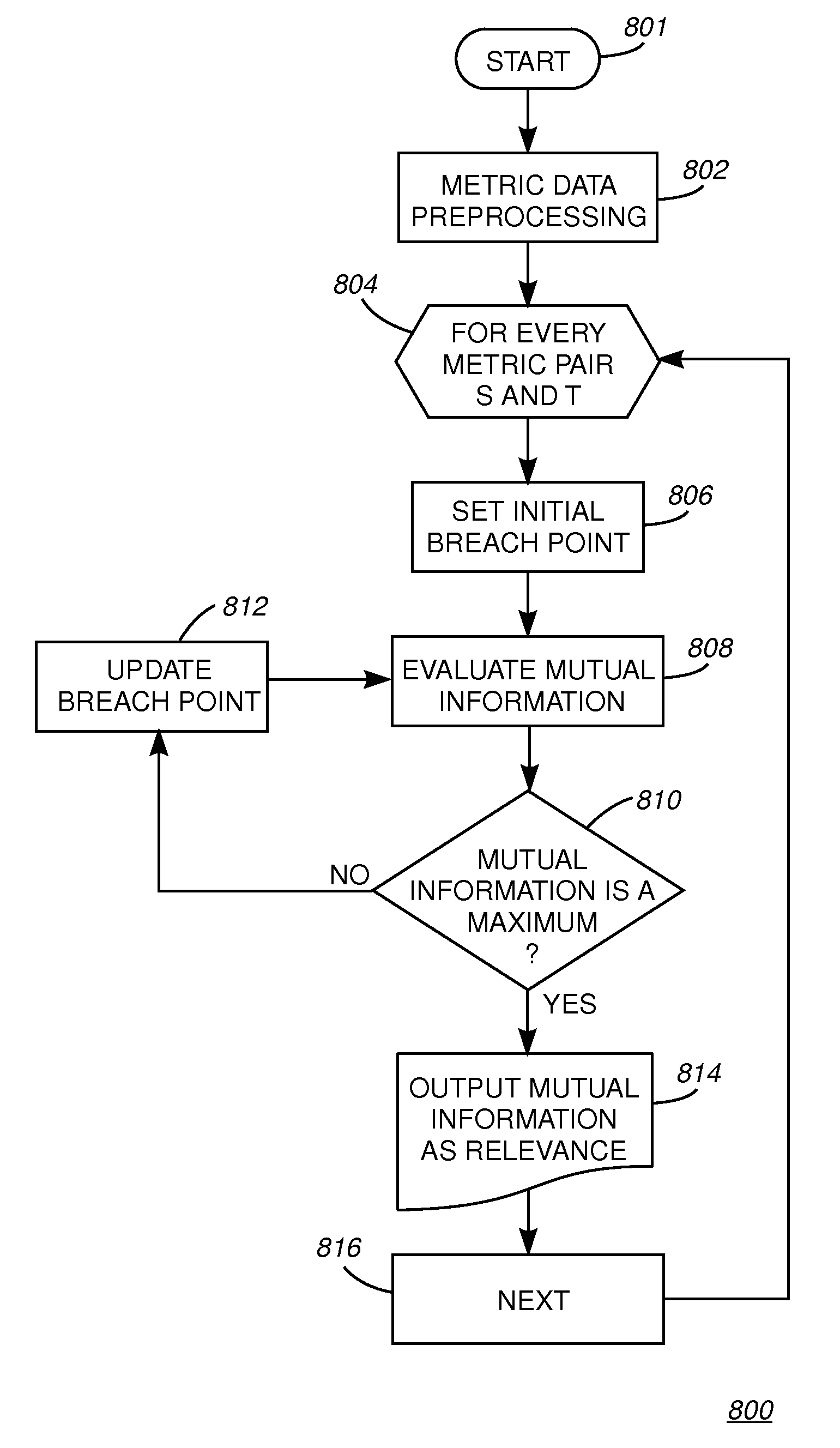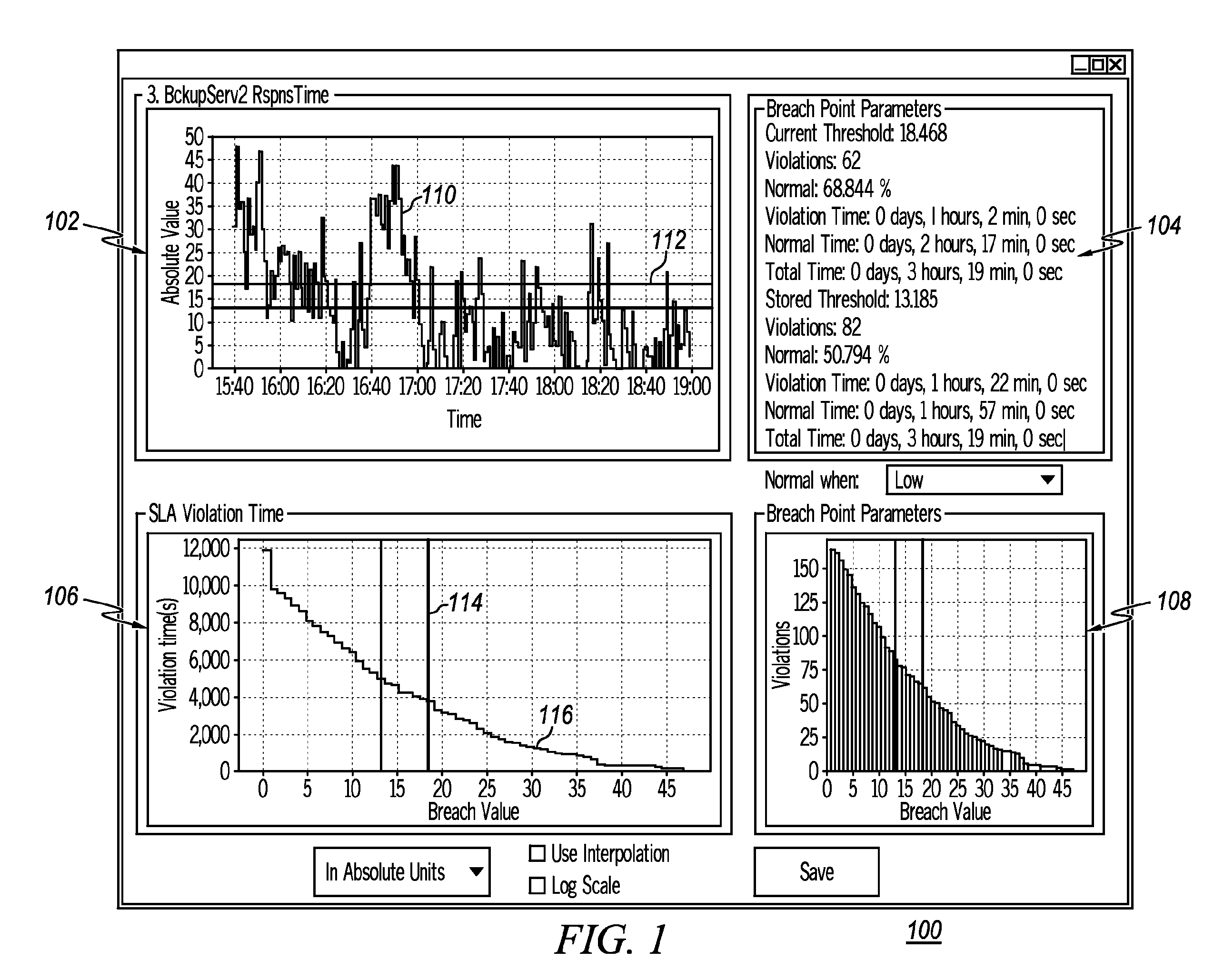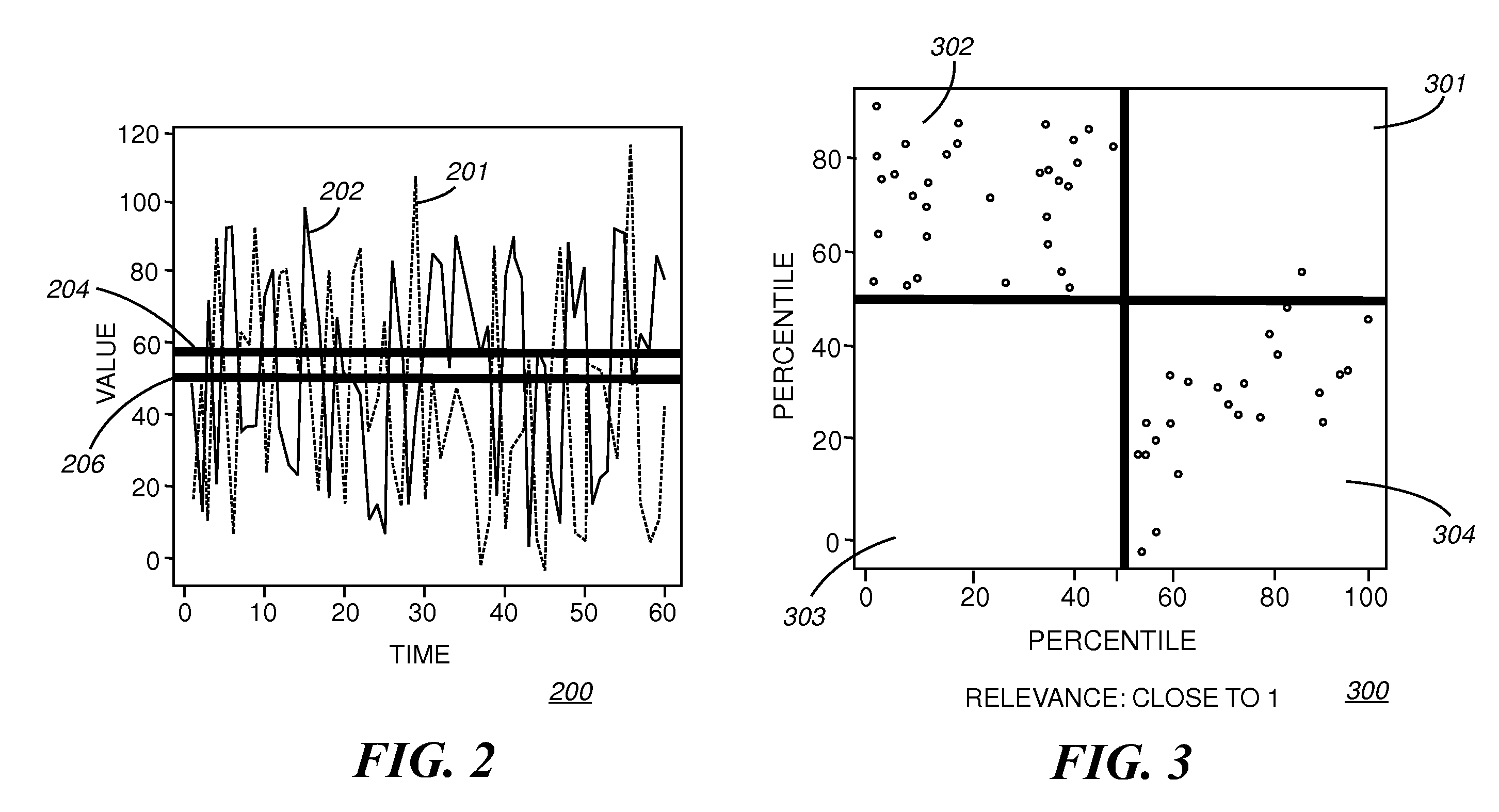Identification of relevant metrics
a technology of relevant metrics and identification, applied in the field of service level agreements, can solve the problems of reducing the number of resources, difficult slm, designers generally lack the ability to choose a set of metrics that is minimal, etc., and achieve the effect of maximizing the distribution of points
- Summary
- Abstract
- Description
- Claims
- Application Information
AI Technical Summary
Benefits of technology
Problems solved by technology
Method used
Image
Examples
Embodiment Construction
[0029]While the specification concludes with claims defining the features of the invention that are regarded as novel, it is believed that the invention will be better understood from a consideration of the following description in conjunction with the drawing figures, in which like reference numerals are carried forward.
[0030]Described now is an exemplary method and hardware platform for performing the method according to an exemplary embodiment of the present invention. Embodiments of the present invention provide a Data Driven Business System Management (DDBSM) methodology that is, in one embodiment, a data analysis process that starts with acquiring metric data from a data repository and ends with a file containing a complete monitoring design for both service level and resource utilization. The metric analysis tool, according to the present invention, allows a user to automatically step through the process while retaining control in decision making.
[0031]Traditional monitoring ...
PUM
 Login to View More
Login to View More Abstract
Description
Claims
Application Information
 Login to View More
Login to View More - R&D
- Intellectual Property
- Life Sciences
- Materials
- Tech Scout
- Unparalleled Data Quality
- Higher Quality Content
- 60% Fewer Hallucinations
Browse by: Latest US Patents, China's latest patents, Technical Efficacy Thesaurus, Application Domain, Technology Topic, Popular Technical Reports.
© 2025 PatSnap. All rights reserved.Legal|Privacy policy|Modern Slavery Act Transparency Statement|Sitemap|About US| Contact US: help@patsnap.com



